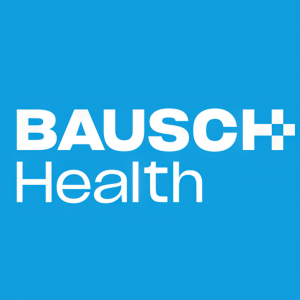Welcome to our dedicated page for Bausch Health Companies SEC filings (Ticker: BHC), a comprehensive resource for investors and traders seeking official regulatory documents including 10-K annual reports, 10-Q quarterly earnings, 8-K material events, and insider trading forms.
Patent expirations, FDA trial updates, and global segment revenue for Salix or Bausch + Lomb can be buried deep inside Bausch Health Companies鈥� disclosures. That makes a 10-K or 8-K more than a compliance form鈥攊t鈥檚 a puzzle investors must solve before patent cliffs hit cash flow. If you鈥檝e ever scanned 300 pages searching for Xifaxan sales or litigation reserves, you know the challenge.
Stock Titan turns those dense documents into clear answers. Our AI-powered summaries flag the exact paragraphs that matter inside each Bausch Health Companies quarterly earnings report 10-Q filing and highlight Bausch Health Companies 8-K material events explained in plain language. You can monitor Bausch Health Companies insider trading Form 4 transactions, receive Bausch Health Companies Form 4 insider transactions real-time alerts, and compare compensation from the latest Bausch Health Companies proxy statement executive compensation鈥攁ll without leaving this page.
Every filing type is updated the moment EDGAR posts: the Bausch Health Companies annual report 10-K simplified for pipeline risk, Bausch Health Companies earnings report filing analysis for margin trends, and understanding Bausch Health Companies SEC documents with AI for patent litigation footnotes. Need quick context? Our platform links drug-specific revenue tables, clinical milestone disclosures, and Bausch Health Companies executive stock transactions Form 4 directly to AI explanations. Access Bausch Health Companies SEC filings explained simply, download originals, or read concise takeaways designed for analysts who value both speed and depth.
Seana Carson, EVP and General Counsel of Bausch Health Companies Inc. (BHC), reported two transactions in a Form 4. On 09/05/2025 the filing shows 51,337 shares were withheld to satisfy tax withholding obligations upon vesting of restricted share units at an indicated price of $7.35, leaving 512,955 shares beneficially owned. On 09/08/2025 the filing shows 13,370 shares sold in the open market pursuant to a Rule 10b5-1 plan at $7.31, reducing beneficial ownership to 499,585 shares.
The Form 4 is signed by an attorney-in-fact on behalf of the reporting person on 09/08/2025. Notes in the filing explicitly state the withholding was for tax obligations on RSU vesting and the sale was executed under a 10b5-1 plan adopted May 7, 2025.
Bausch Health Companies Inc (BHC) filed a Form 144 reporting a proposed sale of 13,370 common shares held at Fidelity Brokerage Services. The filing lists an aggregate market value of $97,734.70 and shows approximately 369,790,319 shares outstanding. The proposed sale is scheduled around 09/08/2025. The shares were acquired on 09/05/2025 through restricted stock vesting and were paid as compensation on the same date. The filer reports no other sales in the past three months and attests to the absence of undisclosed material adverse information.
Bausch Health Companies Inc. (BHC) is soliciting shareholder votes for a Special Meeting to ratify an Amended and Restated Shareholder Rights Plan (the "Rights Agreement"). Shareholders of record as of August 18, 2025 may vote at a virtual Special Meeting scheduled for October 7, 2025. The proxy materials were first mailed on or about August 27, 2025 and are available on the company website and regulatory filers.
The Rights Agreement creates transferable rights attached to each common share that, upon certain triggering events (the "Separation Time" following an "Acquiring Person" obtaining 20% of voting shares or other specified takeover events), become exercisable to purchase common shares at an Exercise Price equal to three times the Market Price (Market Price defined as the 20-day average closing price). The plan contains customary anti-dilution adjustments, a redemption price of $0.00001 per Right, carve-outs for Permitted/Competing Permitted Bids, a requirement to reconfirm the plan every third annual meeting, and other procedural and governance provisions. The filing states 369,800,365 common shares were outstanding as of August 18, 2025 and quorum requires holders of at least 25% of outstanding voting shares.
Lee Frank D., a director of Bausch Health Companies Inc. (BHC), reported the sale of 15,912 common shares in open-market transactions on 08/21/2025 at a weighted average price of $7.66 per share, reducing his beneficial ownership to 73,795 shares. The filing states the shares were sold to provide funds for estimated tax payments arising from a previously vested equity award granted to the issuer's non-employee directors. The reported price range for the multiple transactions was $7.66 to $7.665, and the Form 4 was signed by an attorney-in-fact on 08/22/2025.
Bausch Health Companies Inc (BHC) filed a Form 144 reporting a proposed sale of 15,912 common shares valued at $121,887.71. The shares were acquired on 05/12/2025 through restricted stock vesting as compensation from the issuer. The filer lists an approximate sale date of 08/21/2025 and the broker named is Fidelity Brokerage Services LLC with execution on the NYSE. The filing states there were 369,790,319 shares outstanding at the time and reports no securities sold by the filer in the prior three months. The notice includes the standard insider representation regarding absence of undisclosed material adverse information.
Bausch Health Companies Inc.'s Schedule 13D Amendment No. 7 reports that the group of Icahn-related reporting persons sold substantial holdings and now hold no beneficial interest in the issuer's common stock. On August 14, 2025, Icahn Partners LP sold 20,297,523 shares and Icahn Partners Master Fund LP sold 14,423,595 shares, each at a price of $9.00 per share (including brokerage fees). Following these transactions the reporting persons may be deemed to beneficially own 0 shares and have ceased to be beneficial owners of more than 5% of the class, removing their obligation to report under Rule 13d-1(a).
Paulson & Co. Inc. reports beneficial ownership of 70,755,869 common shares of Bausch Health Companies Inc., representing approximately 19.1% of the outstanding common shares based on 369,790,319 shares disclosed by the issuer. The stake is held through funds advised or managed by Paulson, which retain sole voting and dispositive power over these shares for reporting purposes, while Paulson disclaims direct pecuniary ownership except through those funds. The filing notes recent transactions are listed in an attached exhibit and identifies the issuer's principal executive office in Laval, Quebec. This amendment updates prior Schedule 13D disclosures and clarifies the reporting person鈥檚 role as investment manager.
John Paulson, through managed funds, acquired 34,721,118 shares of Bausch Health Companies Inc. at $9 per share on 08/14/2025, increasing the funds' reported beneficial ownership to 70,755,869 shares. The Form 4 shows the purchase was reported as an indirect holding by the Funds managed by Paulson, and the filing includes a standard disclaimer that Paulson disclaims beneficial ownership except for any pecuniary interest. The transaction reflects a sizable increase in reported stake via managed accounts.


